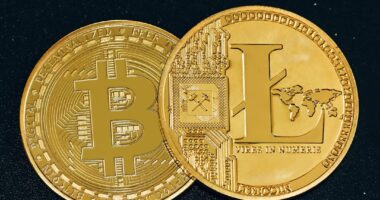Non-fungible tokens (NFTs) are unique digital assets that represent ownership or authenticity of specific digital items, such as artwork, videos, music, or social media content. Unlike fungible cryptocurrencies like Bitcoin or Ethereum, NFTs cannot be exchanged on a one-to-one basis due to their distinct characteristics. NFTs are built on blockchain technology, a decentralized digital ledger that records transactions across multiple computers.
This technology ensures the security and authenticity of NFTs by creating verifiable, tamper-proof records. The ownership and transaction history of NFTs are transparent and publicly accessible, providing trust and security for buyers and sellers. The emergence of NFTs has created new opportunities for creators and collectors to monetize and trade digital assets.
This innovation has led to significant growth in the digital collectibles market, attracting widespread interest and participation from various sectors of the digital economy.
Key Takeaways
- NFTs are unique digital assets that represent ownership of a specific item or piece of content on the blockchain.
- NFTs work through blockchain technology, which ensures the authenticity and scarcity of digital collectibles.
- The popularity of NFTs has surged in recent years, with digital art, music, and other collectibles selling for millions of dollars.
- Investing in NFTs can be lucrative, but it also comes with risks such as market volatility and potential for fraud.
- NFTs have disrupted the art world, providing new opportunities for artists and changing the way art is bought and sold.
How NFTs Work: Exploring the Technology Behind Non-Fungible Tokens
How Smart Contracts Work
Smart contracts automate the process of buying, selling, and transferring NFTs, eliminating the need for intermediaries and ensuring that transactions are secure and transparent.
Unique Identifiers and Metadata
When an NFT is created, it is assigned a unique identifier that distinguishes it from other tokens. This identifier is stored on the blockchain along with metadata that provides information about the NFT, such as its creator, ownership history, and any associated content. The ownership of an NFT is recorded on the blockchain, allowing buyers to verify the authenticity and provenance of the digital asset.
Buying, Selling, and Ownership
When an NFT is bought or sold, the transaction is recorded on the blockchain, creating a permanent and immutable record of ownership. The technology behind NFTs has enabled creators to tokenize their digital assets and sell them as unique collectibles, opening up new revenue streams and opportunities for artists, musicians, and other content creators. The transparency and security provided by blockchain technology have also attracted investors and collectors to the digital collectibles market, driving the growth and popularity of NFTs.
The Rise of NFTs: A Look at the Popularity and Growth of Digital Collectibles

The popularity of NFTs has skyrocketed in recent years, with digital collectibles selling for millions of dollars and making headlines around the world. The rise of NFTs can be attributed to several factors, including the growing interest in digital art and collectibles, the widespread adoption of blockchain technology, and the increasing demand for unique and scarce assets in the digital space. NFTs have gained traction in various industries, including art, music, gaming, and entertainment, as creators and collectors embrace the potential of digital assets.
Artists are leveraging NFTs to monetize their work and reach a global audience, while collectors are investing in digital collectibles as a store of value and a way to diversify their portfolios. The ability to prove ownership and authenticity through blockchain technology has also contributed to the appeal of NFTs, as it provides a level of trust and security that was previously lacking in the digital space. The growth of NFTs has been fueled by high-profile sales and collaborations, as well as the emergence of online marketplaces dedicated to buying and selling digital collectibles.
As more creators and collectors enter the NFT space, the market for digital assets continues to expand, with new opportunities and use cases emerging across different industries.
Investing in NFTs: The Potential and Risks of Buying and Selling Digital Assets
Investing in NFTs can be an exciting opportunity for individuals looking to diversify their portfolios and participate in the growing digital collectibles market. NFTs offer unique advantages as an investment vehicle, including the potential for high returns, scarcity, and the ability to access a global market of buyers and sellers. However, there are also risks associated with investing in NFTs, including price volatility, regulatory uncertainty, and the potential for fraud or counterfeit tokens.
The value of NFTs can fluctuate significantly based on factors such as demand, scarcity, and the reputation of the creator or content associated with the token. While some NFTs have sold for millions of dollars, others have experienced price declines or struggled to find buyers in a crowded market. Investors should carefully research and evaluate NFTs before making a purchase, considering factors such as the provenance of the digital asset, the reputation of the creator, and the long-term potential for value appreciation.
Regulatory uncertainty is another risk factor to consider when investing in NFTs, as governments around the world grapple with how to regulate digital assets. The lack of clear regulations can create legal challenges for investors and creators alike, potentially impacting the liquidity and value of NFTs. Additionally, the decentralized nature of blockchain technology can make it difficult to verify the authenticity of NFTs and prevent fraud or counterfeit tokens from entering the market.
NFTs in the Art World: The Impact of Non-Fungible Tokens on the Creative Industry
NFTs have had a profound impact on the art world, transforming the way artists create, sell, and distribute their work. Digital artists are leveraging NFTs to tokenize their artwork and sell it as unique collectibles, bypassing traditional galleries and reaching a global audience of collectors. This has democratized the art market by providing artists with a new platform to showcase their work and generate income without relying on intermediaries.
The rise of NFTs has also sparked conversations about ownership and provenance in the art world, as blockchain technology enables artists to prove the authenticity of their work and track its ownership history. This has implications for copyright protection and intellectual property rights, as artists can use NFTs to assert control over their creations and ensure that they are fairly compensated for their work. Additionally, NFTs have opened up new possibilities for collaboration between artists and collectors, as creators can embed special perks or unlockable content within their digital collectibles.
While NFTs have brought about positive changes in the art world, they have also raised questions about sustainability and environmental impact due to the energy-intensive nature of blockchain technology. Artists and collectors are increasingly mindful of these concerns and exploring ways to minimize the carbon footprint of NFTs while continuing to innovate in the digital space.
Legal and Ethical Considerations: The Challenges and Controversies Surrounding NFTs

Copyright Infringement and Ownership Disputes
One of the primary challenges is copyright infringement, as NFTs enable individuals to tokenize and sell digital content without obtaining permission from the original creator. This has led to instances of unauthorized use of copyrighted material and disputes over ownership rights in the digital space.
Environmental Impact and Sustainability
Another pressing concern is the environmental impact of blockchain technology used to create and trade NFTs. The significant energy consumption associated with blockchain networks has sparked debates about sustainability and carbon emissions, prompting calls for more eco-friendly alternatives or solutions to mitigate the environmental footprint of NFTs.
Market Manipulation and Regulatory Concerns
Furthermore, there are concerns about market manipulation and fraudulent activities in the NFT space, as some individuals have exploited the hype surrounding digital collectibles to engage in scams or pump-and-dump schemes. This has prompted calls for increased transparency and regulation to protect investors from potential risks associated with buying and selling NFTs.
The Future of NFTs: Predictions and Trends for the Evolution of Digital Assets
As NFTs continue to gain traction in various industries, there are several predictions and trends shaping the future of digital assets. One trend is the integration of NFTs into virtual worlds and metaverse platforms, where users can buy, sell, and display their digital collectibles in immersive environments. This has implications for gaming, entertainment, and social experiences, as NFTs become an integral part of virtual economies.
Another prediction is the expansion of use cases for NFTs beyond art and collectibles, as industries such as real estate, fashion, sports memorabilia, and intellectual property rights explore how blockchain technology can be leveraged to tokenize physical assets or create new forms of digital ownership. The future of NFTs also hinges on regulatory developments and industry standards that will shape how digital assets are bought, sold, and traded. Clear regulations can provide a framework for responsible innovation while protecting investors from potential risks associated with NFTs.
Overall, the evolution of NFTs will be driven by technological advancements, creative innovation, and collaborative efforts to address legal and ethical considerations in the digital space. As more individuals embrace the potential of non-fungible tokens, we can expect to see continued growth and diversification in the market for digital assets.
If you’re interested in learning more about the latest news and developments in the world of NFTs and digital assets, be sure to check out the latest articles on ETH News. Their comprehensive coverage and in-depth analysis provide valuable insights into the rapidly evolving landscape of non-fungible tokens and blockchain technology. Whether you’re a seasoned investor or just getting started in the world of digital assets, ETH News has you covered with the latest information and trends.
FAQs
What are NFTs?
NFTs, or non-fungible tokens, are a type of digital asset that represent ownership or proof of authenticity of a unique item or piece of content using blockchain technology.
How do NFTs work?
NFTs work by using blockchain technology to create a digital certificate of ownership for a specific item or piece of content. This certificate is then stored on a decentralized ledger, making it tamper-proof and easily verifiable.
What can be turned into an NFT?
Almost anything digital can be turned into an NFT, including artwork, music, videos, tweets, virtual real estate, and more. The key is that the item must be unique and distinguishable from other similar items.
How are NFTs bought and sold?
NFTs are bought and sold on online marketplaces that specialize in digital assets. These marketplaces use cryptocurrency as the primary form of payment, and transactions are recorded on the blockchain.
What makes NFTs valuable?
The value of an NFT is determined by factors such as scarcity, demand, and the perceived value of the underlying item or content. Additionally, the provenance and authenticity provided by blockchain technology can also contribute to the value of an NFT.
Are NFTs environmentally friendly?
The environmental impact of NFTs has been a topic of debate, as the process of minting and trading NFTs can consume a significant amount of energy. However, there are ongoing efforts to develop more sustainable solutions for NFTs.





